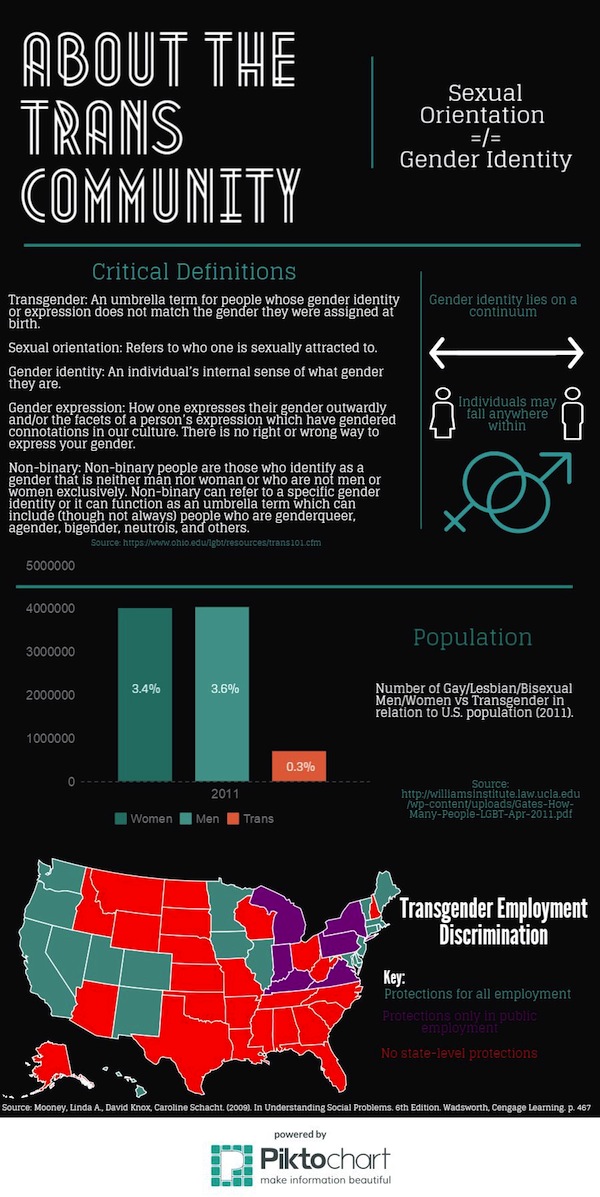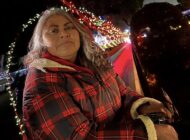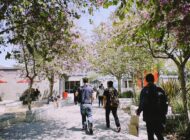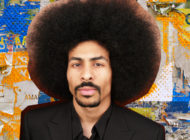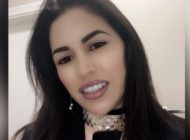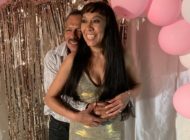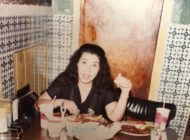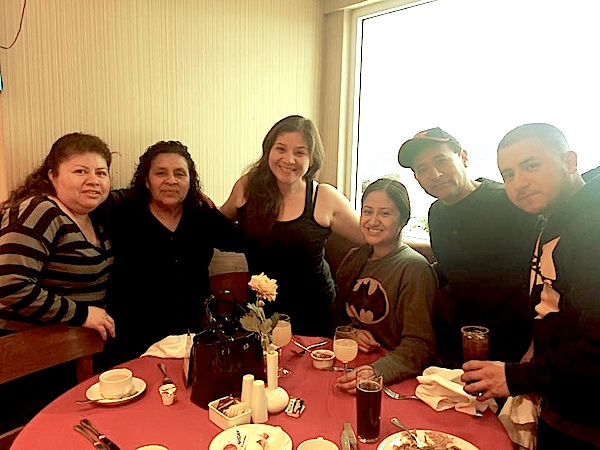What does it mean to be Non-binary Transgender and what’s it like discovering your identity.
By Roy Azoulay
EL NUEVO SOL
When you first meet Orion Block you will quickly learn not to use the words he/she him/her when engaging in conversation. You will have to condition yourself to use the pronouns hir, a combination of him and her, and ze, a gender neutral pronoun coming from Hebrew. This is because Block is non-binary and doesn’t identify as either male or female. Block, who won’t specify hir age, was born female but understood at a fairly young age that ze didn’t feel comfortable when society tried to fit hir in the female box. During high school ze didn’t identify as non-binary yet but knew ze didn’t feel entirely female. Comfortable in hir own skin, Block challenged the norm when ze and hir boyfriend at the time decided to cross-dress to the school dance. Ze wore hir boyfriends tuxedo which was a little big on hir and he wore a dress and a wig but kept his beard. The next day the school announced, “There will be no more cross-dressing at the school dances”. Some of there peers thought it was great while others were appalled and said they were ruining the dance. “We were having fun, that was the only way we were going to have fun at our dance,” ze said. “I know who I am. If you like it, great, we can be friends, if you don’t, then don’t talk to me.”
Today’s society for the most part only accommodates people who identify as male or female yet we know that there is a growing number of people who identify as transgender. According to the Williams Institute, 0.3% of the U.S. population identifies as Transgender which equates to 956,700 people according to the U.S. Census Bureau’s 2014 numbers. Below that umbrella are individuals who identify as non-binary meaning they don’t identify as either male or female.
Block is comfortable with hir identity and is very open about what it means to be non-binary, holding nothing back.
“Even earlier in my life I didn’t stick to any gender roles because it didn’t really work for me,” ze said. “As a lady I’m supposed to just sit quietly not really say anything and not have an opinion. I don’t think we realize that in our culture we have these unspoken restraints on people so because I speak my mind, because I am louder, and because I get angry instead of going to cry, things that aren’t necessarily correct for someone who is assigned female at birth, I get shamed for it.”
A common example of these unspoken restraints that is often brought up in sociology is the association of the color blue for baby boys and pink for baby girls. These symbols are presented to us and we subconsciously accept them as the social norm. These ideas then get instilled in young children which are taken at face value and not given much thought.
“Even though I grew up with these rules I just haven’t been able to follow them very well because I don’t understand them and I have a hard time with rules if I don’t understand them,” Block said. “They don’t mean anything to me so they don’t exist. I tried for a long time. I did my hair, I wore dresses, I tried, I just never quite did it right.”
After high-school, Block entered the workforce as a hair dresser where ze believed ze would gain creative freedom regarding hir identity but ze learned that wasn’t the case. Ze understood that to other people it mattered what ze wore and ze describes hir apparel as a costume for others even though ze wasn’t entirely satisfied with what ze was wearing.
“Clothing is hard for me,” ze said. “It does not bring me joy but image is everything.”
Because block identifies as non-binary and doesn’t consider hirself one gender or another, ze says ze doesn’t fall on the gender continuum at all and that gender doesn’t necessarily apply to hir.
“There isn’t a good label and I don’t really care to have a label because it’s not ever going to be right,” ze said. “It doesn’t change who I am I know who I am. I’ve been like this for a long time. I’m just now actually asserting myself and saying, ‘hey guess what, you no longer get to call me what you want to call me’, I know who I am. I’m allowed to do with my body what I want to and I’m allowed to dress how I want to. I’m on the end of the not-a-gender to fully-gendered continuum.”
Block says there are problems within the trans community regarding non-binary individuals because the community is set up in a binary matter and projects itself as very binary to the general public.
“People who choose to conform and want to blend in do a lot better and it’s a lot easier for them but some people won’t ever blend in,” ze said. “It sets up a standard that’s almost too high and some people can achieve it if they have enough money but many won’t.”
According to Block, the majority of people don’t fit in to the categories of extreme masculinity or extreme femininity even though it’s what a lot of people want to achieve so when someone is assigned a gender and they try to transition to another gender you’re trying to fit in to these standards that are hard for anyone to achieve let alone someone with a different body.
“If we think about our standards of living in our society it makes it really hard to even be okay with yourself and accept yourself for who you are,” Block said. “People are who they identify as and you can’t question them and say no you’re not because that’s truly what they identify as.”
In the U.S. not one state offers the choice of identifying legally as anything other than male or female but in more progressive countries such as Austria and Norway, citizens have the option of being identified as “X”.
Bathrooms are a point of contention since they epitomize the binary nature of our society and can be uncomfortable for non-binary individuals. Having experienced both the male and female restrooms Block finds that there are certain aspects of each bathroom that appeal to hir and others that deter hir.
“In women’s bathrooms everyone wants to talk to you and have a conversation over the stall, which is a great way to meet people but this is not a good time,” ze said. “I like that in the men’s bathroom you do your business and leave. You don’t talk and make eye contact, which to me is super awesome. However in the women’s bathroom I feel more comfortable in the sense that I don’t ever fear being physically threatened.”
Block represents the individual who is comfortable in their own skin, has already gone through the process of discovering their identity, understands what society thinks of them, but whose openness and bluntness allows hir to educate and inform in order to help change the status quo.
Meet Michelle Jones, a 25-year-old deaf studies major from San Diego, who was born female but is still discovering their identity and describes it as an ongoing process. Jones prefers the non-binary pronouns them, they, and their because they are still in the navigation stage.
“ I don’t know what I identify as,” Jones said. “I feel like it changes every time someone asks me. Right now I identify as non-binary. It’s an ongoing process that’s developing every single day. I’m in a phase where I’m mad at the binary system and it disappoints me that I’m expected to dress a certain way.”
Before Jones even began questioning their gender identity, sexual identity was the first obstacle. At 17 Jones came out as lesbian and recognized at a young age that their thoughts didn’t quite line up with what society presented.
As of now, Jones’ family only perceives them as lesbian and allows them to for safety reasons as their navigation continues. Their father didn’t accept it when they came out as lesbian and wanted them to turn to religion which made it challenging for Jones.
“Coming out with my sexual identity is totally different than my gender identity,” Jones said, “and I feel it’s a second phase of coming out, almost like having to come out twice.”
Jones only began addressing gender identity when they got to CSUN as they began to relate to other people who shared their stories in places such as CSUN’s Pride Center.
“It sounded like I was in the same boat as them and I was like, okay, there’s something here that I’m overlooking and not exploring, “Jones said. “I highly focused on my gender so it started when I began to analyze my gender expression.”
After doing a project on gender expression in their queer studies class, it helped them realize that they don’t feel happy with the social binary. For Jones it’s not only about how people perceive them but more importantly how they want to perceive themselves and according to Jones it got very very confusing.
“It’s been really weird because it’s only been about a year figuring out to openly identify as trans but it’s opened so much about who I am and learning about who I am and understanding why I thought certain things when I was little,” Jones said. “I’m trying to unpack all the thoughts from being a kid, middle school, high school, to where I’m at now.”
It’s hard for people to share their identity, to educate, to inform people because of the political views that have already been set up. It’s difficult to recondition people to think differently. But a big part of Jones’ discovery process includes telling people and sparking that conversation.
At an American Sign Language conference that Jones went to, there was an LGBTQ workshop being taught by two trans individuals about which signs to use in the community. At the end was an open discussion and Jones felt the need to speak up. They stood up and announced, “It’s difficult and uncomfortable being a trans person being taught by a bunch of white cisgender people, but I’m here.”
Two months later on their first day of interpreting class, Jones decided to tell people their pronouns and it stemmed from sharing their identity at the conference. It guides them and helps them open up in more spaces.
“It was impactful for me,” Jones said. “It felt real and raw to say it out loud. If I don’t say it out loud it’s like I’m still hiding it and it’s not real.”
Tags: CSUN Michelle Jones Non-binary Orion Block Pride Center Roy Azoulay Trans Transgender Williams Institute







